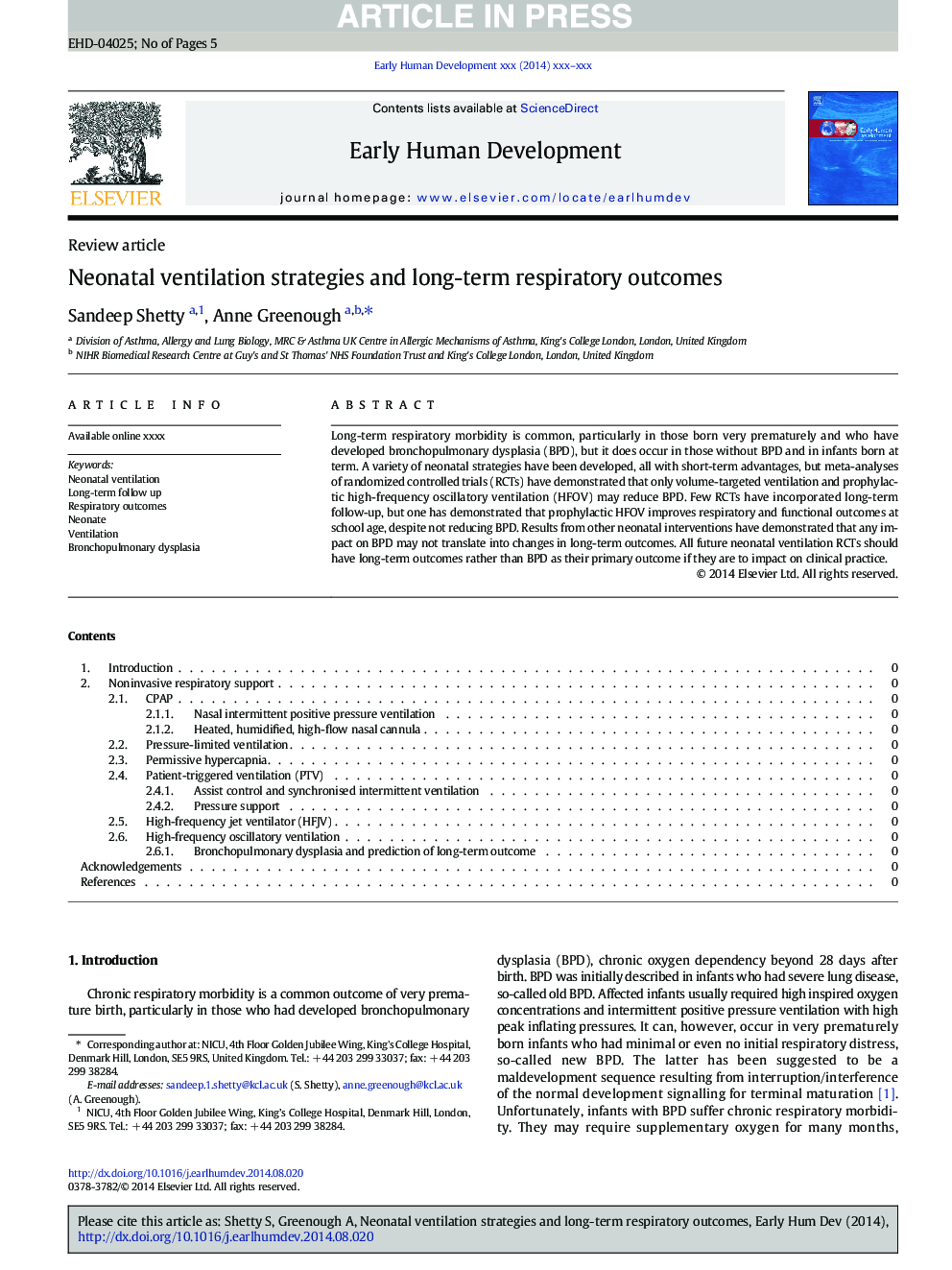| Article ID | Journal | Published Year | Pages | File Type |
|---|---|---|---|---|
| 6171858 | Early Human Development | 2014 | 5 Pages |
Abstract
Long-term respiratory morbidity is common, particularly in those born very prematurely and who have developed bronchopulmonary dysplasia (BPD), but it does occur in those without BPD and in infants born at term. A variety of neonatal strategies have been developed, all with short-term advantages, but meta-analyses of randomized controlled trials (RCTs) have demonstrated that only volume-targeted ventilation and prophylactic high-frequency oscillatory ventilation (HFOV) may reduce BPD. Few RCTs have incorporated long-term follow-up, but one has demonstrated that prophylactic HFOV improves respiratory and functional outcomes at school age, despite not reducing BPD. Results from other neonatal interventions have demonstrated that any impact on BPD may not translate into changes in long-term outcomes. All future neonatal ventilation RCTs should have long-term outcomes rather than BPD as their primary outcome if they are to impact on clinical practice.
Related Topics
Health Sciences
Medicine and Dentistry
Obstetrics, Gynecology and Women's Health
Authors
Sandeep Shetty, Anne Greenough,
